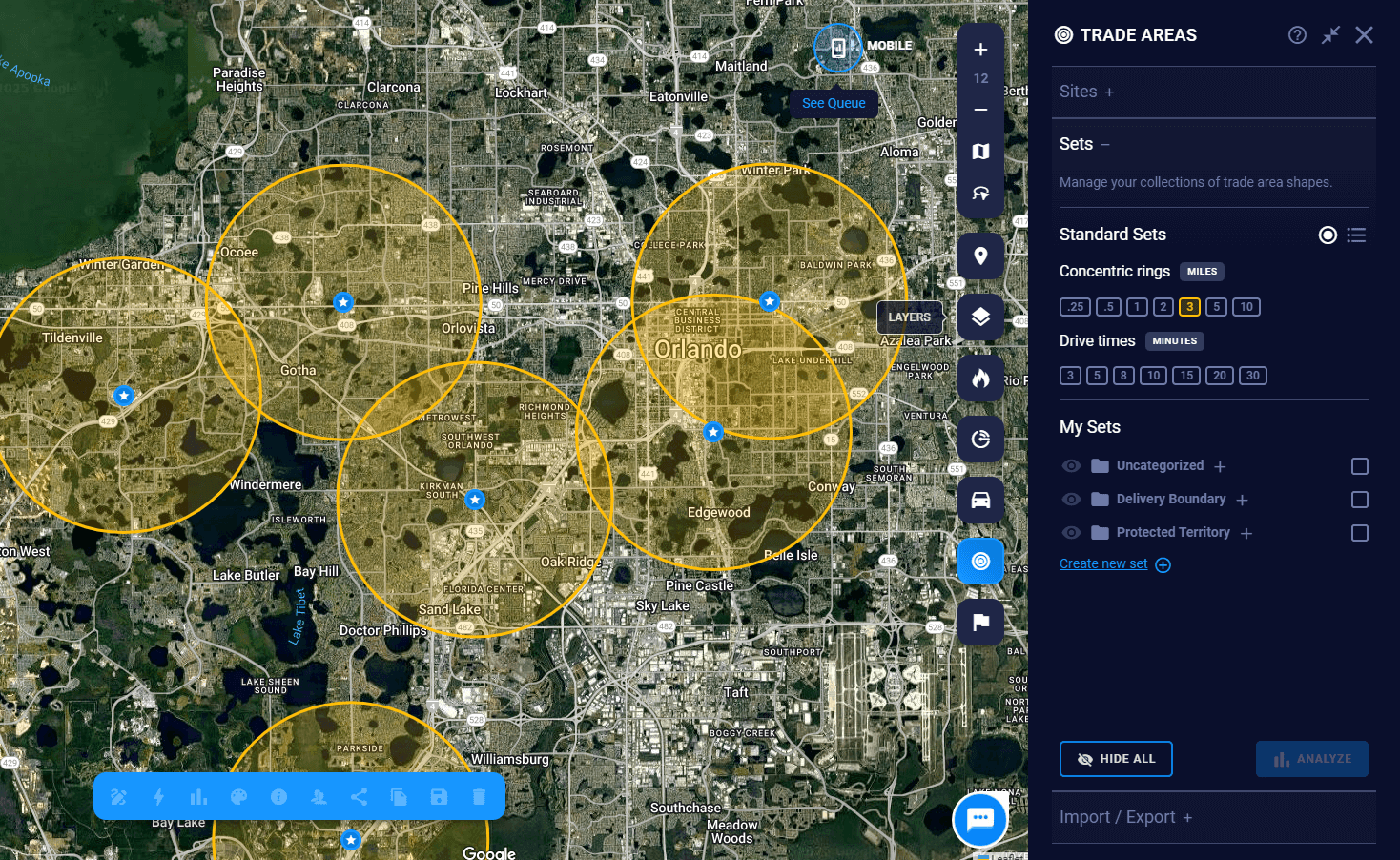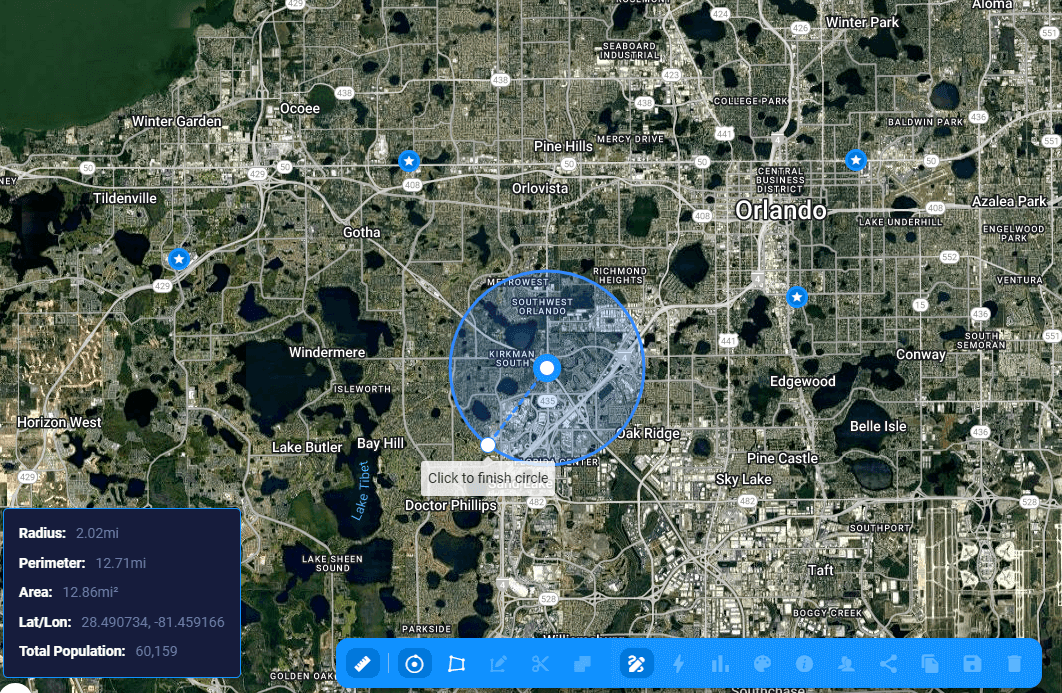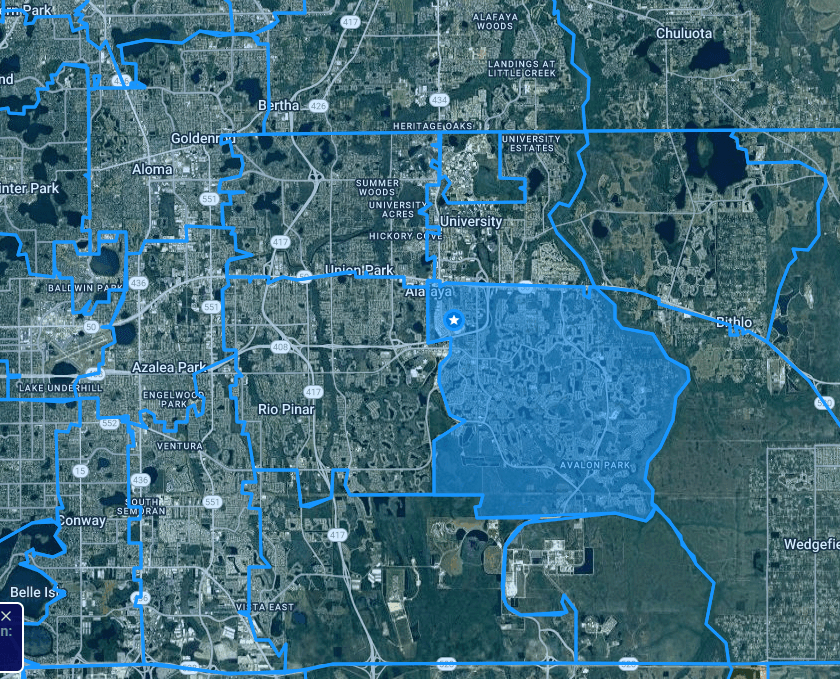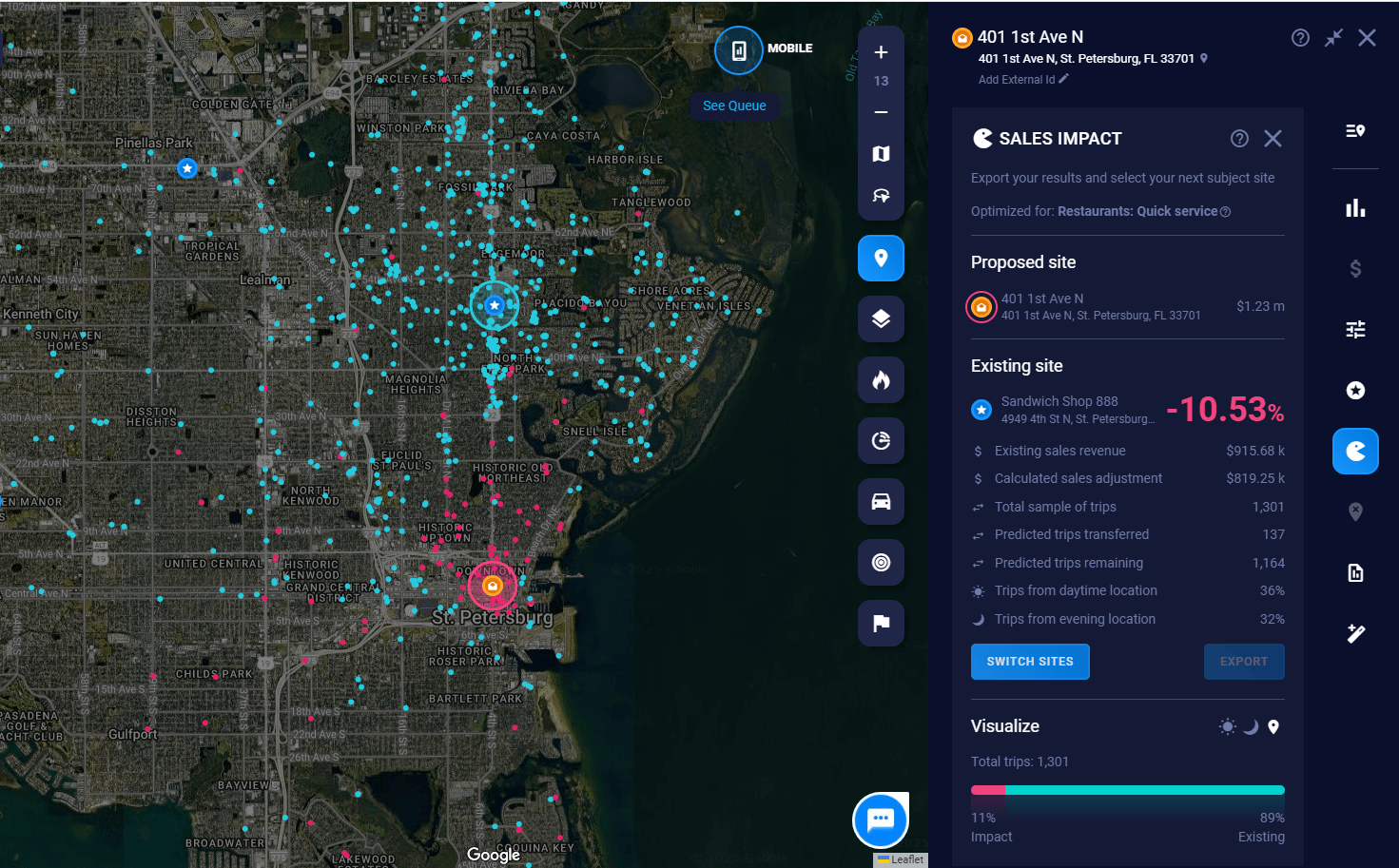Four ways to define protected franchise areas
Choosing the right method to prevent disputes and fuel growth
1. Flat mileage method
This straightforward method assigns each franchise location an exclusive territory defined purely by distance (e.g., a 3-mile radius).

Pros:
- Simple to implement and manage
- Transparent and easy to understand
- Fixed boundaries that don’t change over time
Cons:
While the simplicity of this approach is appealing, it can become problematic for a growing brand as it fails to account for market dynamics.
2. Target population count
This method selects a target number of customers and draws a simple radius until the population threshold is met. For example, each site receives a protected ring representing 50,000 people. This attempts to manage market density and ensure territories are neither excessively large or small.

Pros:
- Adjusts for market density, ensuring fair distribution
- Helps maximize franchisees’ market opportunities without oversaturating an area
Cons:
This method attempts to correct the flaws of a simple radius-based approach but still has significant faults
3. Zip code boundaries
Using zip codes as a boundary involves assigning each franchise location the rights to specific zip codes.

Pros:
- Provides clear geographic divisions for franchise agreements
- Easy to define and manage
Cons:
This method works best for service-based franchises without brick-and-mortar locations seeking simplicity.
4. Impact and cannibalization reports
Rather than providing predefined protected territories, this approach sets up a system with approved analytics providers. When a new site is proposed, all franchisees nearby are alerted and given the option to contest the new development. The franchisor requests an impact report from the analytics provider. If the projected sales impact is greater than 15%, the site is denied. If it is less than 15%, construction moves forward. If the franchisees dispute the findings from the report, they can request a secondary report from another vendor. Binding arbitration is leveraged to resolve any conflicts.

Pros:
- Highly flexible, based on site specific data
- Maximizes revenue for the franchisor while protecting franchisees
- Provides a clear structure to resolve disputes
Cons:
This approach is commonly used by large, established franchises. Brands choosing this route should have robust analytical tools and transparent arbitration processes in place. While this is the most complex solution, it leverages the most accurate forecasting method and optimizes the revenue generated from a market.
Finding your best fit
Each method has advantages depending on your franchise’s goals, growth phase, and market characteristics. Utilizing advanced site-selection platforms like SiteZeus empowers franchisors with precise, data-driven boundary solutions tailored to each market’s unique dynamics. By combining strategic insights with advanced analytics, franchisors can foster franchisee satisfaction, accelerate growth, and strengthen their competitive position.
About the Author:
Sean Ryan is the President of SiteZeus, a cutting-edge software company that leverages advanced data analytics to help businesses grow strategically and efficiently. Connect with Sean on LinkedIn to learn more about data-driven franchise territory strategies.
See it in action
See how top franchisors define protected boundaries with SiteZeus
Did you enjoy this post?
Give it a star rating to help us bring you great content!
Recommended Posts
